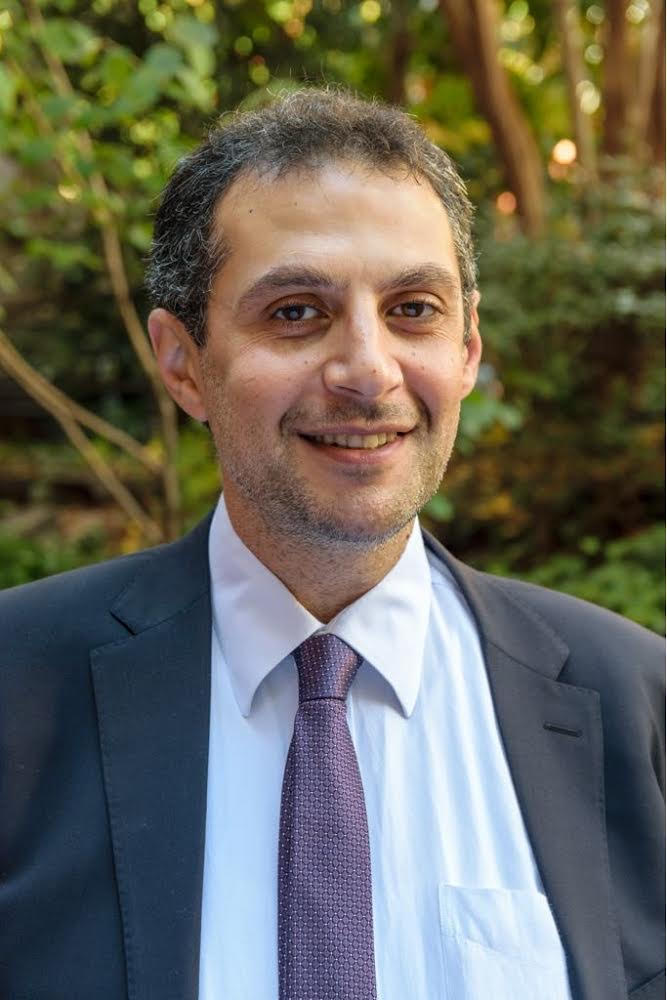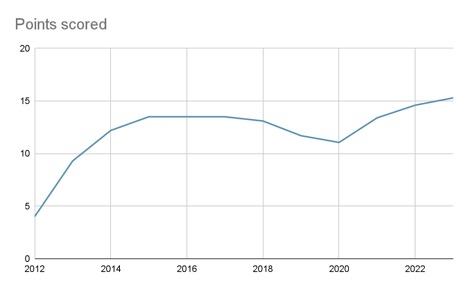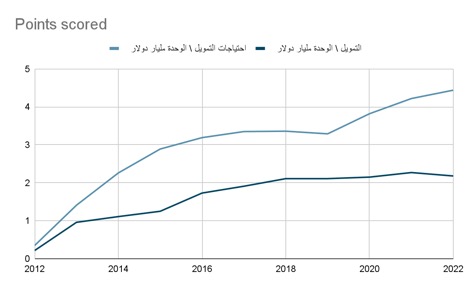This article is part of a dossier in partnership between SyriaUntold and Orient XXI, exploring the consequences of the devastating earthquake that struck Turkey and Syria in February 2023.
A few days after the earthquake of February 6, 2023, the United Nations launched a funding appeal for the response to assist the affected communities in Syria, totaling $397 million. Donations exceeded that amount. However, when we consider the scale of the response based on the number of trucks that entered northern Syria within the six months after the earthquake, we find that the number of trucks is less than 3800 trucks. This is very close to the response rate during 2022, where a total of 7566 trucks entered northwestern Syria through the Bab al-Hawa border crossing. As a result, the response mechanisms were unable to increase the flow of aid after the earthquake. In fact, these months did not witness an increase in response programs; rather, the earthquake revealed that the response system was disoriented and unprepared to deal with the disaster.
Prior to the earthquake, the United Nations described the humanitarian response in Syria as one of the most complex emergency responses in the world. The continuation of this response for 12 years under a state of emergency had a clear impact, making Syria heavily reliant on aid and rendering it extremely vulnerable in the face of the earthquake.
After the earthquake, much has been said about the recovery of the affected communities and the reconstruction of what the earthquake destroyed, as if this was possible regardless of the destruction after years of war, the continuous bombardment by Assad and his allies, and the displacement campaigns that dismantled the country’s population structure. Or as if the aid system after the earthquake would be different from the 12 years of emergency response.
Increase in Dependency on Aid
Through a simple analysis of the numbers provided by the United Nations in the annual needs assessment, which serves as the foundation for the yearly response plan, we find that the number of people relying on aid in Syria consistently increased since 2011. The plan steadily presented an increasing figure for the value of needs each year across all sectors. From 4 million people in need of assistance in 2012, the number reached 13.5 million in 2018, then 15.3 million people by the end of 2022, with 4.2 million in northwestern Syria, accounting for 90% of the population in this region. Meanwhile, the dollar value of the needs increased from $335 million in 2012 to $4.4 billion in 2023.
Several factors played a significant role in the exacerbation of needs across the years. At the forefront are military operations that greatly contributed to the destruction of infrastructure and redirected a significant portion of relief efforts towards the restoration and fortification of humanitarian and service facilities. Additionally, the war caused waves of wide-scale displacement that further intensified the needs. The political and military exploitation of aid by various parties also played an explicit role, notably the Syrian regime, which has a well-structured mechanism and a long history of using these aids for political purposes in the service of its interests and for the benefit of its close associates. Moreover, the role of the emergency response system itself is evident in exacerbating the Syrians’ dependency on aid, especially in the last five years. This is in addition to the political decision by donors to freeze development and recovery programs and support stability in areas outside the regime’s control, particularly after the expansion of Hay’at Tahrir al-Sham in northwestern Syria. Meanwhile, the regime-controlled areas have benefited from some early recovery programs based on each donor’s policy.
The Role of the Political and Military landscape
In 2018, Hay’at Tahrir al-Sham took control of most areas in northwestern Syria and became the main dominant player in this region, leaving limited territory for Turkish-backed factions of the National Army. This was accompanied by extensive military campaigns by the Syrian regime and its Russian ally, resulting in a new redistribution of control. The Syrian regime’s forces gained control over parts of Daraa in the south, entering into local reconciliation agreements with opposition factions. It also took over the northern Hama countryside and the southern Idlib countryside, in addition to the highway between Damascus and Aleppo. Concurrently, the international coalition against ISIS and its allies in Syria ended an era of ISIS control in northeastern Syria.
The Socio-Economic Ramifications of the February 2023 Earthquake in Syria
19 July 2023
Practically, these events in 2018 and 2019 marked the end of a series of military operations that reshuffled and redistributed military control. Since then, Syria's territories haven't witnessed major changes, nor seen large-scale military operations. The Syrian conflict turned into a frozen conflict with occasional minor breaches. The political process is disrupted, and there is an international desire to maintain the status quo, along with regional efforts to normalize relations with the Syrian regime.
This military and political landscape evidently impacted the structure of humanitarian response. The Russian veto halted cross-border operations from Jordan to southern Syria, and the humanitarian crossing with Iraq was also stopped. Consequently, UN agencies ceased operations in northeastern Syria, and humanitarian operations became fully managed by international and local organizations. The Syrian regime also shifted from its obstinate behavior regarding cross-border aid to a more flexible approach, to be in charge instead of the UN Security Council. These effects, visible to all, were accompanied by a clear change in donors’ policy for operations in Syria according to the areas of control. These changes prompted international donors to review development programs and stability support plans in areas controlled by Hay’at Tahrir al-Sham. All funding outside the framework of emergency humanitarian response for this region thus ceased.
Logically, the end of military operations should lead to a decrease in needs. However, whether measured by the number of populations dependent on aid or the amount of required funding, it is clear that needs escalated from 2019 onward. Meanwhile, the funding ratio dropped from 62% of the needs in 2018 to 49% of the needs in 2022.
Within this context, the economic siege and sanctions have an obvious impact on exacerbating needs in regime-controlled areas. Only 18% of aid in regime controlled areas reach the people in need and the rest goes to the regime cronies.
The complexity of the situation is worsened by the absence of any political solution in sight and the lack of accountability mechanisms in Syria for the years of war crimes. Besides, many lingering issues, like missing persons, detainees, property rights, housing, and other obstacles will obstruct early recovery in Syria in the absence of essential components like peace and societal cohesion. This requires considering mechanisms that don’t leave divided communities under the weight of an assistance system that worsens needs instead of alleviating them.
The Role of Humanitarian Assistance Mechanism
Besides all this, emergency humanitarian aid system plays a major role in increasing the society’s reliance on assistance, as well on neighboring countries and international organizations. While humanitarian response possesses the tools to enhance early recovery processes, support local communities in boosting their economies, and build their capacities to stand gradually on their own, the political and military landscape has led international actors to stop any operations that could aid these communities. Donors fear that these aids might indirectly support the current authorities, providing a pretext to cease support for their development programs in northwest Syria. The de-escalation after 2019 has not translated into a shift from emergency response to recovery, unlike in regime-controlled areas, where this is bypassed, especially by UN agencies and some donors like Japan.
Emergency humanitarian aid system plays a major role in increasing the society’s reliance on assistance, as well on neighboring countries and international organizations.
Examples of this can be observed across sectors. While food baskets were distributed to over six million beneficiaries in 2022, programs supporting agriculture and livestock projects were halted. In the water and sanitation sector, large areas in northern Syria still rely on tanker and well water for drinking. Throughout the years of war, the sewage systems in many cities, like Idlib and northern Aleppo suburbs, were overburdened by the population growth, without receiving any proper maintenance.
Other sectors like healthcare have been funded over the years to provide life-saving and primary healthcare services, yet they still depend on the private sector or medical referrals to neighboring countries for tertiary care. Till before earthquakes, around 30 patients daily were transferred to Turkey from northwestern Syria, despite repeated efforts from health organizations to provide these services locally. Education, on the other hand, presents the most obvious weakness in the emergency response system. Education funding is limited to elementary school, leaving 2.4 million children in Syria completely or partially cut off from education, deepening their reliance on aid in the long term.
Halt of Governance Programs, No Advocate for the Vulnerable
One of the main factors that weakened development programs and increased reliance on aid is ending the support for governance programs. This led to the response being governed by United Nations coordination mechanisms, which cannot escape the politicization of aid and the corruption of controlling entities.
Off the Richter Scale: Tracking Misinformation in the Aftermath of the Kahramanmaras Earthquake
24 May 2023
Ending governance programs has shifted the power balance in the response and services, where the upper hand is held by United Nations agencies and non-governmental organizations in areas beyond the regime’s control. This has a clear impact on multiple aspects; roads are constructed by the organizations, water is provided by the organizations, and health is a sector reliant on these organizations. Donors interpret the concept of localization of aid very narrowly, favoring non-governmental organizations exclusively, without focusing on empowering the local community itself. The complexity of the political landscape and the dominance of terrorist-designated entities like Hay’at Tahrir al-Sham, have led donors to adopt safer routes in front of their parliaments and press. For example, they opt for support through non-governmental organizations licensed in other countries to facilitate the monitoring process. Despite ongoing attempts by Syrian organizations to support local governance efforts, halting support for governance programs and relying solely on non-governmental organizations empties the community of its resources and capacities, undermining any effort to support local governance. This renders the community’s ability to recover artificial and confined to non-governmental organizations that lack mechanisms to include the community’s voice in planning and programming.
Whereas, in areas under the regime’s control, we find a different model, highly centralized and governed by security mechanisms that control the aid process and the activities of non-governmental bodies, which are politically utilized in favor of the regime. This leaves extremely limited space for civil society to operate. In the end, it’s the society that bears the cost on both sides of the conflict, becoming more vulnerable and increasingly reliant on assistance.
And then, the Earthquake Came
The earthquake was unforeseen; it destroyed what had survived the years of war and the inadequacies of the response system. Syrians were left alone, revealing all the weaknesses in aid mechanisms, their politicization, and deep corruption.
Access through border crossings and its reliance on a UN Security Council decision limited aid delivery in the initial days to the sole crossing that feeds northwestern Syria, Bab al-Hawa. Additionally, funding shortages and low stock levels within Syria left local teams powerless. The military and political situation in northwestern Syria prevented international search and rescue teams from reaching the area. The responsibility falls on the United Nations and countries with military presence on Syrian territory, especially the United States, for not utilizing their capacities in search and rescue, or facilitating international teams' access at the very least.
The lack of local governance and the association of the response with a complex system driven remotely across borders made its fate dependent on response platforms.
The lack of local governance and the association of the response with a complex system driven remotely across borders made its fate dependent on response platforms. The earthquake’s damage in Gaziantep and Antakya in Turkey, which are the operational and logistical centers of response, amplified the impact on Syria.
To understand the scale of the earthquake’s impact and what could have been done to make the response better, one must look at the situation on February 5th, a day before the earthquake. Certainly, the military and political factors, after years of war, had a significant impact, but the response could have been better if the humanitarian response system in Syria had been better designed.
Was it possible to have a better response?
Direct factors exist, such as the disruption of the UN information collection system a few months before the earthquake and the absence of humanitarian leadership. The position of Deputy Regional Coordinator, the highest UN position in Gaziantep, was vacant. Furthermore, a decrease in stock levels in humanitarian organizations’ warehouses within Syria hindered the response. If we eliminate these factors, the response could have been better. However, there are chronic factors and measures to confront it that could have improved the response, and they must be considered:
February 6th Earthquake: How do we understand what happened and where are we today?
14 July 2023
- Utilizing the decrease in military operations to enhance recovery efforts and support stability in all Syrian areas. Strengthening the connection between development work and humanitarian work would have promoted political solutions instead of waiting for political solutions to initiate recovery processes. Donors should have sought solutions to bypass the Syrian regime’s mechanisms and other controlling authorities, which manipulate and utilize aid for political and military purposes, instead of confining the response to emergency humanitarian response.
- Overcoming the political utilization of cross-border decisions through the UN Security Council or regime consent to ensure full cross-border access through all crossings in areas outside the regime's control in northeastern and northwestern Syria.
- Establishing transparent and strict mechanisms for aid, especially in regime-controlled areas.
- Expanding the concept of localization beyond the humanitarian context. In the 2016 World Humanitarian Summit in Istanbul, international humanitarian actors, including donors, United Nation agencies and international organization, introduced the “Grand Bargain,” committing to empower local response globally , a concept then called “Localization”. Frameworks have been established to assess advancements in this concept; however, alongside the substantial lack of global progress in implementing this commitment, there is a fundamental flaw in the Syrian context. This flaw lies in its confinement to localization solely through humanitarian non-governmental organizations, disregarding the developmental dimension and its significance. Furthermore, it fails to encompass the empowerment of local communities that played a significant role in the earthquake response. Its implementation up until now remains largely superficial, despite some Syrian institutions demonstrating high capabilities, especially when left alone to confront the earthquake.
- Building a local governance system for humanitarian response: donors imposed significant limitations on humanitarian institutions’ dealings with authorities in Syria, yet they failed to find alternatives through unions, directorates, or unified independent bodies, similar to the Civil Defense model, that would coordinate search and rescue efforts. The response is entirely dependent on non-governmental organizations while sidelining local councils and other local governance bodies. This is particularly complex in areas under opposition control, like Idlib, due to the existence of the Syrian Salvation Government and the classification of Hay’at Tahrir al-Sham as a terrorist organization. Despite this, donors opted to distance themselves from any interaction with local authorities, placing the full risk on humanitarian organizations, and civilians end up paying the price twice: once under Hay’at Tahrir al-Sham’s control and once due to donors’ behavior.
- A local governance system for humanitarian response would enhance multi-sector response, especially in cases like natural disasters where the efforts of authorities, service providers, private sector, and civil society should work together. There is a clear monopoly in humanitarian coordination and data collection by the United Nations and its agencies operating remotely in northwestern Syria. They treat local Syrian institutions as mere implementers, with the United Nations striving to prevent any programs or institutions from leading local coordination. Negative competition among Syrian civil society organizations exacerbates this issue.
In the last five years, since military operations decreased in Syria, more than $12 billion has been allocated for the response in Syria. Certainly, these billions cannot resolve the humanitarian crisis, especially since they barely cover 50% of the needs, and a significant portion goes toward international organizations’ administrative expenses. However, these funds could have been utilized more effectively to make the response in Syria less fragile in the face of earthquakes. Behind this entire scene lies an international failure to achieve a political solution that guarantees justice and accountability.













